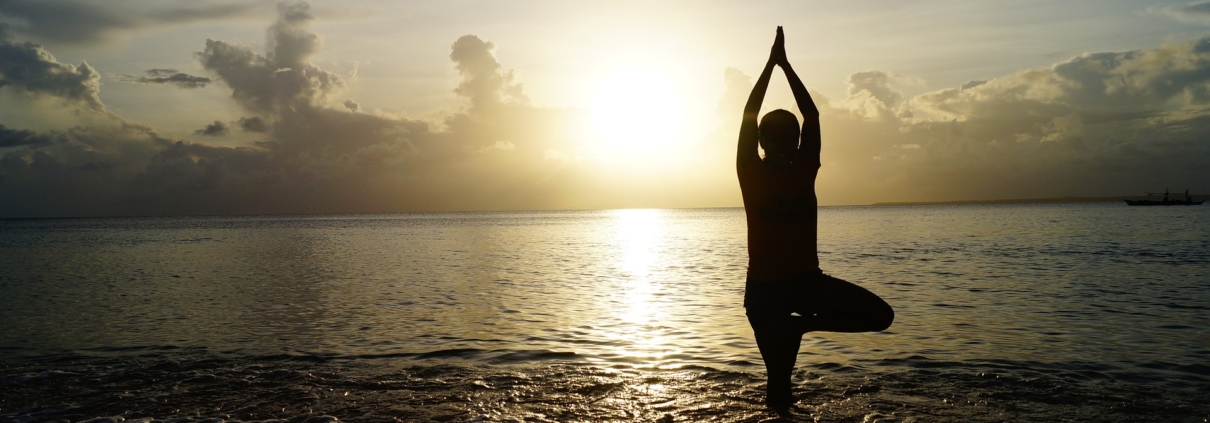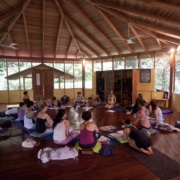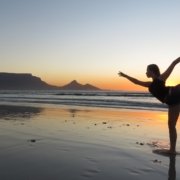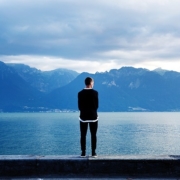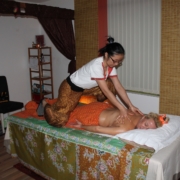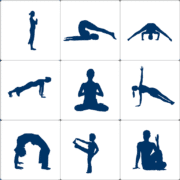Best Yoga for Anxiety and Depression (NO MORE STRESS)
Why Yoga is Increasing Becoming the Favorite Remedy for Depression and Anxiety Disorders? If your feeling stressed make sure you read on.
Anxiety affects millions of people worldwide. In the US, over 40 million adults suffer from anxiety disorders; this translates to roughly 18 percent of Americans aged 18 and above.
Not to mention, even people who haven’t been diagnosed with anxiety medically suffer from occasional stress, anxiety, and tension. On the other hand, depression affects over 260 million people globally. It’s the leading cause of suicides each year.
It’s normal for a person suffering from an anxiety disorder to be depressed and vice versa. Nearly 50 percent of the people diagnosed with depression also suffer from anxiety disorders.
While there are plenty of remedies for treating depression and anxiety symptoms, very few are as effective as yoga.
Yoga is undoubtedly one of the top remedies for treating anxiety and depression. By design, yoga allows you to direct your focus and attention to your body and breath. The practice helps reduce physical and mental tensions resulting from being depressed or anxious.
Yoga can help your body and mind slow down. Our bodies are designed to heal naturally; unfortunately, all that is stopped by the daily stressors of life. Yoga can dissolve all the stressors you face each day, and the effects can last several hours after.
Why Use Yoga as a treatment for Anxiety And Depression?
Anxiety and depression can be treated using a host of methods. However, most remedies that are supposed to deal with the problem aren’t effective. And this is where yoga fills the gap.
When most people hear about yoga, they think about the physical aspects of the practice, but yoga is much deeper than that. Yoga incorporates breathing exercises and is known to be as effective as meditation.
Most research shows that yoga can affect stress response, your reaction to fear and can calm centers of the brain are key to busting depression and anxiety. Also, slow breathing has been found to affect brain cells that control calm behaviour. All these points show the growing body of evidence that yoga and meditation can treat specific mental health problems.
Using medication to deal with the symptoms of depression and anxiety is the first port of call for most patients. Unfortunately, the side effects produced are uncomfortable and undesirable to most patients. Moreover, over 30 percent of patients using medication become resistant to prescribed drugs after some time.
As a result, most people living with anxiety or depression prefer alternative treatments over conventional medicine. Yoga is one of the reliable alternatives for treating these disorders.
In short, yoga therapy is safe, inexpensive, and a long term solution for treating anxiety and depression symptoms. Most yoga practices contain many elements used in treating anxiety, such as cognitive reframing, relaxation techniques emphasizing breathing, mindfulness of sensory input, concentration, and dealing with distress, etc.
Can Yoga Alleviate Depression? What Research Shows
More people are straying from conventional depression and anxiety treatments and adopting a more holistic approach. Yoga ranks top of the list of non-medicinal ways to address depression and anxiety disorders. While research into this subject is still ongoing, there’s fair proof to show that yoga does have a positive effect on mental health disorders.
Note, however, to reap the benefits of yoga, you must be consistent. Renowned yoga experts recommend doing physically active yoga for at least one hour once or twice a week for about three months. If you are disciplined enough, you will realize less depressive symptoms. While general yoga can be helpful, meditation combined with Asana (specific body movements) and pranayama (breathing) yoga practices is found to be the most effective in restoring mental balance.
Here’s a closer look at yoga’s impact on anxiety and depression.
What You Need to Know About Yoga Therapy
Yoga is an intensively physical practice. It involves the movement of body parts to achieve different poses. This coupled with monitored breathing techniques and meditation is what is the most effective in fighting anxiety and depression symptoms like fatigue and loss of concentration.
Aside from alleviating stress and anxiety, yoga can be used to manage issues such as;
- Chronic pain
- Lower back issues
- General health and well-being
How Yoga Therapy Works Against Anxiety and Depression
When used correctly, yoga can be incredibly powerful in treating anxiety and depression. Even when yoga is relatively new to you, simple meditation and physical exercises can help. Meditation works to get you in touch with your inner self. It allows you to clear your mind and makes you aware of your feelings at the moment. Physical exercises, on the other hand, strengthen your body as well as your mind.
Below is a list of ways yoga works against anxiety and depression.
Improves your Mood
Yoga poses and exercises are excellent methods of increasing your serotonin levels. Serotonin, otherwise known as the ‘happy hormone’, is what your brain needs to stay in high spirits. A serotonin deficiency means that you will feel often demotivated, stressed, less energized, and anxious.
The fluid, gentle, and calming nature of yoga is what makes it incredibly relaxing and ideal for people with anxious and depressive symptoms. Anyone can do yoga, this irrespective of age, weight, or gender. Your experienced instructor will know just how to help you focus on concentration, breathing, and physical movement, all tailored to your mental and physical needs.
Reduces Anxiety and Stress
Your yoga instructor is trained to help feed positive thoughts into your mind and body. They may also use monitored breathing to increase or decrease your heartbeat rate. The goal is to induce relaxation which in turn allows your body to slowly learn how to self-monitor, adapt, and respond to stress and stressful situations.
Most people who suffer depression and anxiety are found to have an extremely low tolerance for pain. So to help you beat this limitation, your instructor may encourage you to try several difficult poses to increase your tolerance to pain. Ultimately, while you build physical strength, you also build mental strength. Remember, strong-minded people are better equipped to address various stressful situations head-on as opposed to it being a trigger for falling into a depressive state.
Ready To Get Started With Yoga?
Have you been diagnosed with depression and anxiety? If yes, then yoga has something good in store for you. So how can you get started?
Check With your Doctor First
As quickly as many are to close the door on conventional treatment, you still need insight from the doctor on whether or not you are fit enough to engage in physically intensive exercises.
If you are 50 years or older, pregnant, or have a pre-existing medical condition, the doctor may take you through several physical and internal tests to establish how stable you are. In the long run, you will either get barred from yoga if you may be found at risk or get the go-ahead to practice yoga if you are fit enough.
Choose the Right Class
Yoga is incredibly broad. While many are eager to hit the ground running, others are better suited for a slow start. This explains why it is important to find the class best suited for you.
Common types of yoga include Bikram, Hatha, and Iyengar. Each one of these yoga techniques focuses on performing meditation, monitored breathing techniques, and physical poses. Consider consulting the instructor to get guidance on the best beginner’s class to take.
If you work on a tight schedule or are based too far from the community center, studio, or gym where the yoga classes are held, you may ask to attend their online yoga classes. Here’s a closer look at different types of yoga classes and who they are designed for as you look to deal with your depressive and anxious symptoms.
Iyengar-here you learn the right way to make various poses. The goal of this type of yoga is to help align your body with the help of props like straps, boards, harnesses, chairs, and more. This yoga type is perfect for beginners because you get a detailed introduction to the physical aspect of yoga as a practice.
Hatha-besides practicing body postures/poses, Hatha also teaches you to breathe and meditate. Here, you learn how to connect the mind and body. Owing to how gentle and slow-paced this type of yoga is, older people, pregnant mothers, and people with mild pre-existing conditions will fit right in.
Bikram-if you can’t stand the heat, then this type of yoga may be discomforting. Why? Because Bikram yoga exercises are done in a heated room where the temperatures are no lower than 40 degrees Celsius. Here you learn a lot about endurance and how to monitor your breathing. It has a total of twenty-six poses and two breathing workouts. This yoga practice is best for experienced yoga enthusiasts, athletes, and physically active people.
Feel free to try different yoga classes to find which is the most comfortable for you.
Benefits of yoga as a treatment for anxiety and depression
Many yoga practices are safe and effective remedies for dealing with anxiety and depression. However, some are strenuous and may not be appropriate, especially for the elderly or people with mobility issues. That’s why consulting a doctor before choosing yoga is highly advised.
All in all, many people prefer yoga when it comes to dealing with stress, anxiety, and depression. Yoga enhances both your physical and mental health, and this is one of the reasons why it appeals to so many patients around the world. Here are some of the main reasons why yoga is the best remedy for treating stress, anxiety, and depression
1. It teaches you ways for breathing
Yoga helps you become aware of your breathing. When you are in control of your breath, you can deal with panic attacks, which limit your ability to breathe freely. Any time you notice signs of anxiety or you are feeling depressed, pay attention to your breathing using yoga. In short, enhanced breathing reduces anxiety and the impact of panic attacks. Any time you are anxious, try breathing in and out to feel better.
2. It helps you to become present at the moment
Yoga is a demanding practice. You have to be present in terms of concentration; otherwise, you can lose your position or balance. As a result, you need to concentrate on your body, and this helps treat anxiety or depression symptoms. Concentrating on the actual pose helps focus less on what’s on your mind and makes you live in the present moment. This is the key to freeing your mind from anxious thoughts.
3. It empowers to be in control
Your instructor plays a vital role in making you pose correctly. However, practicing yoga and experiencing yoga is all on you. You control every moment when practicing yoga. If you are depressed or anxious, you lack control, but with yoga, you can regain it. Yoga essentially empowers you to retake charge of your life.
4. It enhances your self-confidence
Some of the yoga poses will naturally improve your self-confidence. Postures such as the crow or headstand can improve your confidence if you can perform them unaided. Performing these poses can undoubtedly increase your self-esteem and help you deal with anxiety and depression.
5. Releases tension
When you are anxious or depressed, it’s only natural to be tensed up in your shoulders, back, and neck. Yoga aids you to let go of the tensions, making you become more open and feel freer.
6. Aids insomnia
Depressed and anxious people have insomnia. Yoga makes you aware of your breathing and helps calm your mind. When you practice yoga, you’ll feel more relaxed, and your body will be ready for sleep.
7. Improves digestion
Lots of yoga poses directly stimulate the abdominal area, helping digestion. Stress, tension, and anxiety can have a negative influence on your metabolism. Stimulating the stomach region yoga is known to improve your digestion
8. Stimulates blood flow
Upside down poses enhance blood flow to your head, helping detoxify your adrenals. Stimulating your adrenals is critical in decreasing depression symptoms. These glands are vital to your well being because the produce hormones needed to fight stress
9. peace and calm
Practicing yoga can bring about feelings of calmness and peace. The combination of deep movements, calm environment, gentle instructions, and incredible music, work in tandem to promote ultimate tranquility. If you’re feeling anxious or depressed, all you need is to practice yoga and be tranquil again.
Yoga poses for calming Anxiety
Eagle Pose (Garudasana)
The eagle pose helps shift your focus from mind toward the body’s healing and recalibration. The pose helps in quieting your mind and bringing focus to your body. Try the eagle pose for 30 to 60 seconds on both your sides.
Headstand pose
Headstand pose helps reduce anxiety by reversing your blood flow and compelling you to focus on your body and breathing in the present. Though the headstand looks challenging, beginner yogis can try it out with the help of an instructor. The pose is flexible and accessible. For instance, you can perform it against the wall to start.
Child Pose
Child poes is one of the first resting poses for yoga. The pose involves sitting on your knees and bending forward, stretching your arms forward, or on your side. The pose is known to be very self-soothing and comforting. Lying on your belly can help ease anxiety besides slowing your mind down.
Corpse pose
Any time you are feeling stressed, depressed, or overwhelmed, lie down flat and ensure your arms are on your side. Focus on your breath for several minutes and watch yourself relax to the fullest. This method empowers you to focus on your breath as you watch your belly go up and down.
Half-moon pose
Inorder to promote focused awareness and a calm mind, the half-moon is all you need. With this pose, you sit in a balanced posture with one leg raised at 90 degrees and one hand touching the floor. This pose removes your attention from your mind to the body thereby easing anxiety and depression
Tree pose
Before delving into half mood and eagle poses, beginner yogis are advised to start with the tree poise. Mainly, the posture involves standing in a balanced manner, and it helps pose concentration and calm a racing mind. Whenever you are in a tree pose, and your mind is racing, you’ll likely fall over
Leg up the wall pose
This a simple yet effective anxiety stopping method for beginners that can aid you in escaping the trappings of the thinking mind. You don’t have to be reliable or flexible to perform this pose. The pose is very calming and relaxing, especially to your nervous system.
Forward bend pose
Forward bend pose is an active posture for calming your nervous system. The position soothes the mind and offers the upper body a channel for tension release.
Fish pose
The fish pose is a highly recommended therapy for busting anxiety and fatigue. This pose also helps you stretch your shoulder and back. If you’re a beginner, place a thick blanket beneath your head to support your neck to avoid discomfort.
More info about yoga poses.
Yoga poses for depression.
Forward fold (Uttanasana).
This pose removes any depression in your mind of you hold it for at least two minutes or more
Head -to knee forward bend (Janu Sirsasana).
The seated forward fold is excellent for calming your mind. It stretches your hamstrings and groin besides stimulating your liver and kidneys.
Cobra (Bhujangasana)
The backbend pose can be executed in stages. It helps expand your chest and provides elasticity to your lungs.
Bridge (Setu Bandha Sarvangasana)
The bridge pose involves bending backward. It helps open your chest, strengthen your legs and stimulates your lung thyroid and abdominal organs,
Supported Headstand (Salamba Sirsasana)
Sirsaana is usually referred to as the king of all asana. The inversion turns your body upside down and provides your brain cells with fresh blood flow. You have to focus and be attentive when doing this pose, which means it’s a great opportunity to pause your thoughts and have a fresh perspective,
Takeaway
There’s plenty of scientific literature supporting the use of yoga as an effective cure for anxiety and depression symptoms.Studies show that yoga can help deal with anxiety, stress, and depression. Yoga incorporates both mediation and controls physical movements designed to stimulate both your mind and body. It fosters deep breathing and body stretching, which are vital elements in fighting symptoms of anxiety and depression. Whether you have insomnia, you are dealing with pain, or you have lost your zest for life, yoga can help you regain your life back.
No matter the style of yoga you select, you can tweak the poses to match your level. You can find yoga classes in plenty of places like studios, community centers, hospitals, etc. If you can’t access such facilities, then you can rely on instructional videos on youtube and other apps. Ultimately, practising yoga can be your key to getting rid of depression and anxiety from your life for good. If you would like to take things a step further and train to be a yoga teacher with us here in Costa Rica, we have you covered.

